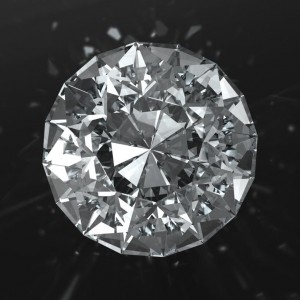Diamond Clarity – What Buyers Ought to Know?
 It’s said that “diamonds are a woman’s best friend” and we couldn’t agree more! Whether a diamond is mounted on a ring or worn in the form of a pendant, its luster and sparkle is simply breathtaking. If you’re also planning to buy a diamond for yourself or your loved one, and if it’s your first time, then make sure it is clear, if not flawless.
It’s said that “diamonds are a woman’s best friend” and we couldn’t agree more! Whether a diamond is mounted on a ring or worn in the form of a pendant, its luster and sparkle is simply breathtaking. If you’re also planning to buy a diamond for yourself or your loved one, and if it’s your first time, then make sure it is clear, if not flawless.
When it comes to buying a diamond, its clarity is a crucial factor as it has a big impact on not just the beauty of this gem but also its final cost. Though the splendor and luster of a flawless diamond is unprecedented, such diamonds are very rare to find. Here’s why; Natural diamonds are formed when carbon is subjected to heat and tremendous pressure, deep under the surface of the earth, because of which they develop internal and external characteristics which impact the clarity of the diamonds.
Since the diamond formation process is so vigorous, even the finest pieces of diamonds are somewhat flawed. However, the degree and visibility of the flaw in the diamond is what really determines the clarity.
What is Diamond Clarity?
A diamond’s clarity can best be described as its purity. Simply put, it is a measure of the presence or absence of the flaws such as blemishes and inclusions in and on the diamond, and how these flaws impact the gem’s ability to absorb and then reflect back the light. Blemishes are external while inclusions are internal imperfections.
Factors Used to Evaluate a Diamond’s Clarity
There are a number of factors that gemologists use to determine the clarity of a diamond. These include:
- The number of imperfections
- Size of these flaws
- Relief
- Nature
- Their position on the gem stone
- How they affect its visual appearance
As mentioned above, though no diamond is 100 percent pure and free from imperfections, however, a diamond with the least or smallest imperfections is higher in value.
GIA Diamond Clarity Scale
To better understand and determine a diamond’s clarity, GIA (the world’s leading diamond research institution) introduced a clarity scale in 1930 which is used even today. This scale has six categories and divided into a total of 11 grades, that range from FL to 13 and is used worldwide to assess the clarity of different diamonds. Here’s a closer look at the GIA Clarity Scale, please note that the clarity scale is graded under 10xmagnification:
- FL- Flawless- It means no blemish or inclusion is visible
- Internally-Flawless (IF)- No inclusion is visible
- Very, Very Slightly Included (VVS1 and VVS2)- Slight inclusions but are difficult for a trained-grader to see
- Very Slightly Included (VS1 and VS2)- Inclusions are visible but are very minor
- Slightly Included (Sl1 and Sl2)- Noticeable inclusions
- Included (I1, I2 and I3) – Inclusions are obvious and have the ability to affect the brilliance and transparency of the diamond.
When buying a diamond, make sure it has a high clarity grade as such a diamond is not just unbelievably gorgeous, but it’s also a good investment. You can easily sell it off and recover your invested money, whenever needed.

